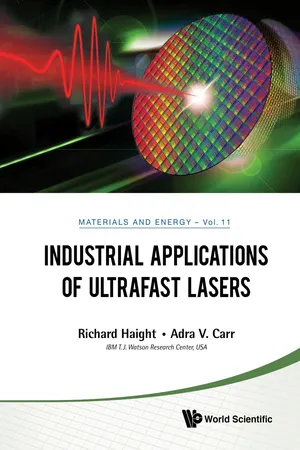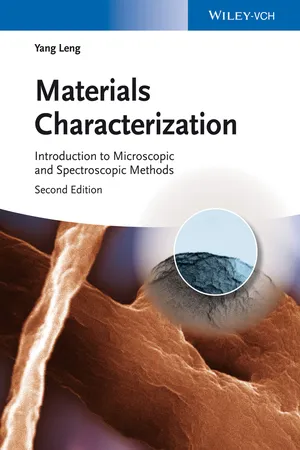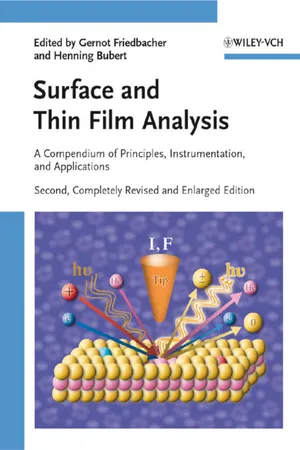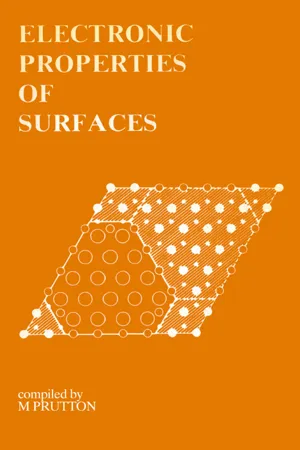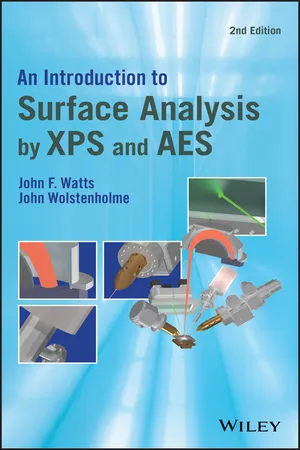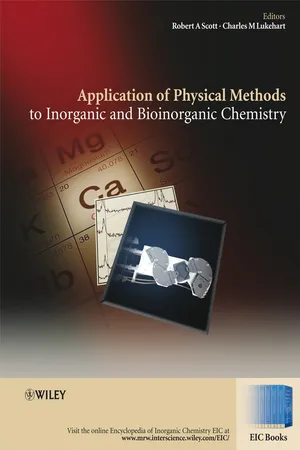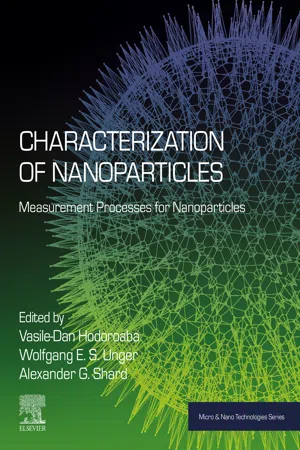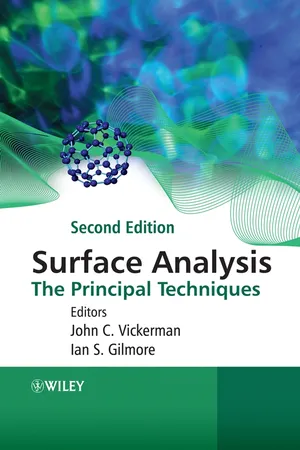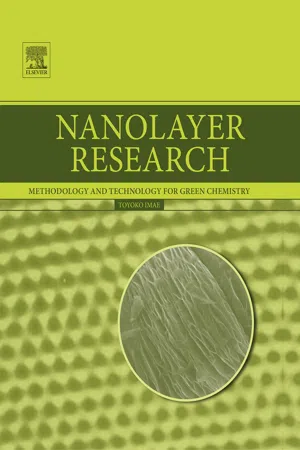Chemistry
Photoelectron Spectroscopy
Photoelectron spectroscopy is a technique used to study the energy levels of electrons in atoms and molecules. By measuring the kinetic energy of photoelectrons emitted when a sample is exposed to light, valuable information about the electronic structure and chemical bonding can be obtained. This method is widely used in chemical analysis and materials science to understand the composition and properties of various substances.
Written by Perlego with AI-assistance
Related key terms
Related key terms
1 of 4
Related key terms
1 of 3
12 Key excerpts on "Photoelectron Spectroscopy"
- eBook - ePub
- Richard Haight, Adra V Carr(Authors)
- 2018(Publication Date)
- WSPC(Publisher)
Chapter 4Femtosecond Photoelectron Spectroscopy: Fundamentals and Electron Dynamics4.1IntroductionPhotoelectron Spectroscopy (photoemission) has a long history originating with Einstein’s initial explanation of the photoelectric effect in solids [1 ]. But we would not start that far back. The interaction of energetic light with materials, whether they be solids, gases, or liquids is of fundamental importance in physics. Photoemission allows us to peer into the electronic interior of these materials in a unique way. When combined with structural characterization that includes, for example, electron microscopies, atomic force microscopies, ion scattering, and more, a full characterization of a material and its properties is within our reach.In particular, photoemission provides an in-depth view of the electronic structure and properties of materials. Energy states occupied by electrons within the valence bands of materials, known as its electronic band structure, can be elucidated with angle resolved photoemission. Chemical states of atoms at and near the surface can also be interrogated by investigating the deeper bound core levels that shift in response to charge transfer resulting from chemical reactions. Collective electronic properties that include band edge and Fermi level location, the alignment of states at the interface between two dissimilar materials, the work function of materials under various conditions, magnetic properties and more can all be interrogated with photoemission spectroscopy.Photoelectron Spectroscopy can be separated, perhaps a bit arbitrarily, into two energetic regimes. The first regime extends from ∼5 eV, corresponding to the minimum energy required to liberate an electron from a solid (work function) to ∼1 keV. Photoelectron Spectroscopy is typically referred to as ultraviolet photoemission spectroscopy (UPS). The lowest photon energies correspond to the typical work functions of most materials of ∼4–5 eV although the alkali metals and alkali-dressed solid surfaces can have work functions as low as ∼3 eV. 5 eV photons are not absorbed by atoms comprising air but beyond ∼6–7 eV, these photons are increasingly absorbed in air and are referred to as the vacuum ultraviolet. Photons with energies beyond 1 keV are used for X-ray Photoelectron Spectroscopy, also known as XPS. At these higher energies, light penetrates solids more effectively, photoexcited valence electrons have longer inelastic mean-free paths (as will be discussed later in this chapter) and atomic core levels for most, if not all, elements are energetically accessible. - eBook - ePub
Materials Characterization
Introduction to Microscopic and Spectroscopic Methods
- Yang Leng(Author)
- 2013(Publication Date)
- Wiley-VCH(Publisher)
Chapter 7
Electron Spectroscopy for Surface Analysis
Electron spectroscopy is a technique that uses characteristic electrons emitted from a solid for elemental analysis, not for microstructure imaging as in electron microscopy. The characteristic electrons (either Auger electrons or photoelectrons) exhibit characteristic energy levels, revealing the nature of chemical elements in the specimens being examined. Auger or photoelectrons can only escape from the uppermost atomic layers of solid (a depth of 10 nm or less) because their energies are relative low (generally 20–2000 eV), while the characteristic X-rays can escape from a much greater depth (several micrometers from the surface). Thus, electron spectroscopy is a technique for surface chemical analysis. There are two types of electron spectroscopy: Auger electron spectroscopy (AES ) and X-ray Photoelectron Spectroscopy (XPS ). Auger electrons and photoelectrons are different in their physical origins, but both types of electrons carry similar information about chemical elements in material surfaces.7.1 Basic Principles
7.1.1 X-Ray Photoelectron Spectroscopy
The X-ray photoelectron is an electron ejected from an electron shell of an atom when the atom absorbs an X-ray photon. Figure 7.1 a schematically illustrates the emission of a photoelectron from an atom when it is excited by an X-ray photon. As mentioned in Chapter 6, an incident X-ray photon can have sufficient energy (a value of hv) to knock out an inner-shell electron, for example, from the atom's K shell. In such a case, the K-shell electron would be ejected from the surface as a photoelectron with kinetic energy EK . Knowing the kinetic energy EK , we can calculate the binding energy of the atom's photoelectron (EB ) based on the following relationship7.1Φ is the parameter representing the energy required for an electron to escape from a material's surface, h is Planck's constant and ν is the frequency. The value of Φ depends on both the sample material and the spectrometer. The binding energies of atomic electrons have characteristic values, and these values are used to identify elements, similar to the way that the characteristic X-ray energy is used in X-ray spectroscopy. XPS identifies chemical elements from the binding energy spectra of X-ray photoelectrons. A typical XPS spectrum is a plot of intensity versus binding energy. Photoelectrons are ejected from different electronic shells and subshells. Each binding energy peak is marked as an element symbol plus a shell symbol from where the photoelectron was emitted, for example, Al 2p, O 1s, and so on, as shown in Figure 7.2 . The photoelectrons emitted by subshells p, d, and f are commonly marked with an additional fraction number; for example, . There are and for the p subshell, and for the d subshell, and and for the f subshell. These fractions represent the quantum number of total angular momentum (J) for an individual shell electron, as mentioned in Section 6.1.1. An XPS spectrum may also contain peaks from Auger electrons. For example, the spectrum shown in Figure 7.2 includes Auger electron peaks marked as O KLL and C KLL - eBook - ePub
Surface and Thin Film Analysis
A Compendium of Principles, Instrumentation, and Applications
- Gernot Friedbacher, Henning Bubert(Authors)
- 2011(Publication Date)
- Wiley-VCH(Publisher)
Part One: Electron Detection 2 X-Ray Photoelectron Spectroscopy (XPS) Henning Bubert, John C. Rivière, and Wolfgang S.M. WernerX-ray Photoelectron Spectroscopy (XPS) is one of the most widely used surface analytical techniques, and is therefore described here in more detail than any of the other techniques. At its inception by Siegbahn and coworkers [1], it was called ESCA (electron spectroscopy for chemical analysis), but the name ESCA is now considered too general, as many surface electron spectroscopies exist, and the name given to each one must be precise. Nevertheless, the name ESCA is still used in many places, particularly in industrial laboratories and their publications. Briefly, the reasons for the popularity of XPS are the exceptional combination of compositional and chemical information that it provides, its ease of operation, and the ready availability of commercial equipment.2.1 PrinciplesThe surface to be analyzed is irradiated with soft X-ray photons. When a photon of energy hν interacts with an electron in a level with binding energy E B (E B is the energy E K of the K-shell in Figure 2.1 ), the entire photon energy is transferred to the electron, with the result that a photoelectron is ejected with kinetic energy(2.1)where ΦS is a small, almost constant, work-function term.Figure 2.1 Schematic diagram of electron emission processes in solids. Left: Auger process; Right: photoelectron emission process. Electrons involved in the emission processes are indicated by open circles.Obviously, hν must be greater than E B . The ejected electron may come from a core level or from the occupied portion of the valence band, but in XPS most attention is focused on the electrons in core levels. As no two elements share the same set of electronic binding energies, measurement of the photoelectron kinetic energies enables elemental analysis . In addition, Equation 2.1 indicates that any changes in E B are reflected in E kin , which means that changes in the chemical environment of an atom can be followed by monitoring changes in the photoelectron energies, leading to the provision of chemical information - Giorgio Speranza(Author)
- 2023(Publication Date)
- CRC Press(Publisher)
1 Introduction to Surface Analysis by X-ray Photoelectron SpectroscopyDOI: 10.1201/9781003296973-11.1. INTRODUCTION
The physical and chemical properties of a material are tightly related to electronic structure of the component atoms. Crystalline or amorphous phases and the material chemical composition strongly influence the charge distribution around the nuclei and the electric potential they generate. Then, a precise description of the material properties requires the ability to accurately probe the electronic structure of atoms and how it changes upon the different chemical configurations. X-ray Photoelectron Spectroscopy (XPS) utilizes X-photons to investigate the material properties. The term X-ray is used to indicate a radiation with wavelengths in the range 10–0.01 nm corresponding to soft and hard rays. Different frequencies of X-photons correspond to the different kinds of light/matter interactions. This led to the development of a number of techniques to probe materials at different length scales, from the macroscopic dimensions to the atomic level: in the first case, bulk structural and chemical information are provided (X-ray diffraction, X-ray fluorescence, X-ray tomography, etc.), while in the second case, the description of the local environment of the atoms is obtained (Extended X-ray Absorption Fine Structure and X-ray Absorption Near-Edge Spectroscopy, X-ray Photoelectron Spectroscopy).This book focuses on the use of XPS to characterize the material’s properties. The ability to exactly describe the characteristics of a given solid depends on the proficiency in correctly utilizing the XPS instrument and on the skill to extract the information from the XPS spectra. This book is aimed at describing a tool for analyzing the XPS spectra. It is directed to a wide community composed by both beginners and experts. The book contains basic information and tutorials for who is new with the XPS technique. These parts are coupled to practical sections illustrating the use of the RxpsG- eBook - ePub
- M. Prutton(Author)
- 2018(Publication Date)
- Routledge(Publisher)
Photoelectron Spectroscopy of Solids and their SurfacesRH WILLIAMS† , GP SRIVASTAVA† and IT McGOVERN‡† Physics Department, The New University of Ulster, Coleraine, N Ireland, UK‡ Physics Department, Trinity College, Dublin, IrelandAbstractIn this review we discuss photoemission from solids and their surfaces. We concentrate in particular on angle-resolved photoemission which over the past few years has been developed into one of the most powerful spectroscopic methods for studying solids, particularly when used in conjunction with light sources such as synchrotron radiation. We discuss the basis of the technique, and briefly outline developments in experimental and theoretical methods. We then consider examples of the application to a range of problems, to study the electronic band structure of solids, to study surface states, to probe the orientation, lateral interaction and chemical state of atoms and molecules on surfaces, as well as to probe the crystallographic ordering at surfaces.1. IntroductionPhotoelectron Spectroscopy has become one of the most important methods for probing the electronic structure of atoms, molecules and condensed matter. In the present review we shall consider the application of the technique to study solids and their surfaces. In favourable circumstances detailed information relating to the band structure of crystals, the lifetimes of electrons and holes in solids, the geometrical orientation and ordering of the valence energy levels of atoms and molecules adsorbed on surfaces and finer details relating to their lateral interaction and coupling to the substrate can be extracted from photoelectron spectra.During the 1970s there has been a dramatic improvement in our understanding of the technique and great strides forward have been made on the experimental front with the development of angle-resolving techniques and the application of new photon sources such as synchrotron radiation. Perhaps the most important reason for the rapid development of the technique during the past decade has been the ready availability of techniques to clean solid surfaces, to maintain them clean during study, and to expose them to known adsorbates in an accurately controlled way. If a fresh surface is generated, e.g. by fracture of a crystal, in a vacuum of say 10−6 Torr, then on the assumption that every atom or molecule from the environment that hits the fresh surface sticks to it (i.e. a sticking coefficient of unity) the surface will be completely covered by the gas overlayer in a few seconds. Thus, in order to have adequate time to probe the clean surface it is necessary to have available a vacuum better than 10−10 - Leonard J. Brillson(Author)
- 2016(Publication Date)
- Wiley(Publisher)
eV for monochromatized soft X-rays.7.1.5 Principles of X-Ray Photoelectron Spectroscopy
7.1.5.1 Chemical Species Identification and Chemical Shifts
XPS provides quantitative analysis of electronic materials in four ways: (i) using known binding energies and subshell photoionization cross sections, one can identify chemical species in survey spectra across a wide range of binding energies; (ii) focusing on a particular core level feature, one can use energy shifts in binding energy to identify chemical bonding environment; (iii) using the dependence of XPS features on the angle of photoemitted electrons, that is, the take-off angle, one can identify the elemental nature and binding geometry of near-surface species, and (iv) using rigid shifts of all XPS features, one can identify whether band bending or charging takes place. With the availability of soft X-rays and the ability to vary , one can also identify species from their known cross section variations as varies.Figure 7.5 illustrates two examples of atomic identification and chemical shifts. Figure 7.5 a shows an XPS spectrum of Cr metal before and after oxidation. Since core level binding energy is relative to , one adds the 4.5 eV known work function of Cr from Track II Table T7.2 to the 74.2 eV measured binding energy shown below to obtain a 78.7 eV binding energy relative to – close to the 80 eV binding energy listed in Track II 1 Table T7.1 for the Cr 3s level. Similarly, Figure 7.5 b shows an XPS spectrum of bare Si before and after oxidation. Again one adds the work function of Si, nominally 4.1 eV for n-type Si, to the 99.15 eV binding energy shown to obtain a 103.25 eV binding energy relative to – close to the 104 eV binding energy listed in Track II Table T7.1 for the Si 2p level. Most work functions are in the 4–5 eV range so that binding energies relative to can be approximated to within- John F. Watts, John Wolstenholme(Authors)
- 2019(Publication Date)
- Wiley(Publisher)
5. For convenience, the subscripts are sometimes omitted.1.3 X‐ray Photoelectron Spectroscopy
In XPS we are concerned with a special form of photoemission, i.e. the ejection of an electron from a core level caused by an X‐ray photon of energy hv. The energy of the emitted photoelectron is then analysed by the electron spectrometer and the data presented as a graph of intensity (usually expressed as counts or counts per second) versus electron energy; the X‐ray induced photoelectron spectrum.The kinetic energy (EK ) of the electron is the experimental quantity measured by the spectrometer, but this is dependent on the energy of the X‐ray source employed and is therefore not an intrinsic material property. The binding energy of the electron (EB ) is the parameter which identifies the electron specifically, both in terms of its parent element and atomic energy level. The relationship between the parameters involved in the XPS experiment is as follows:Where hv is the photon energy, EK is the kinetic energy of the electron, and ϕ is the work function of the spectrometer.As all three quantities on the right‐hand side of the equation are known or measurable, it is a simple matter to calculate the binding energy of the electron. In practice, this task will be performed by the control electronics or data system associated with the spectrometer and the operator merely selects a binding or kinetic energy scale whichever is considered the more appropriate. It should be emphasised that the positions of XPS peaks on the binding energy scale are independent of the X‐ray photon energy but the positions of X‐ray induced Auger peaks will depend upon the photon energy. On the other hand, if the spectrum is displayed on a kinetic energy scale then the position of the Auger peaks will remain constant while the position of the XPS peaks will change with photon energy.- Robert A. Scott, Charles M. Lukehart(Authors)
- 2013(Publication Date)
- Wiley-Interscience(Publisher)
26 but to date this technique has only been applied to the analysis of relatively small molecular systems. A variant of this technique uses the pulsed field to actually cause the ionization, and is referred to as ZEKE-PFI (pulsed field ionization) spectroscopy.2.10 Additional Experimental Considerations
To summarize, Photoelectron Spectroscopy is a large field of study that has many subfields, and new techniques continue to be introduced. These different subfields all have different instrumental and sample constraints, but taken as a whole, photoelectron spectroscopic experiments can be performed on almost any system of interest in inorganic chemistry. The main physical constraints limiting the usage of different photoelectron techniques to different chemical problems have been summarized above.One additional constraint to the widespread application of these techniques is the availability of spectrometers. Surface spectrometers are commercially available, although due to the need for ultrahigh vacuum technology, the purchase price and upkeep costs can be appreciable. Gas-phase spectrometers are not currently commercially available and must be custom built with the specific design dependent upon the type of samples and experimental information of interest. The most important components that control the key features of any photoelectron spectrometer are the sample handling and entry area, the photon source, and the electron kinetic energy analyzer. Ancillary components for vacuum production, vacuum measurement, and electron measurement are also required. Samples for gas-phase spectroscopy are typically introduced as a constant flow, with neutral molecules requiring heating to a sufficient vapor pressure; once in the gas-phase samples may be cooled by jet expansion to decrease thermal broadening of signals.- eBook - ePub
Characterization of Nanoparticles
Measurement Processes for Nanoparticles
- Vasile-Dan Hodoroaba, Wolfgang Unger, Alexander Shard(Authors)
- 2019(Publication Date)
- Elsevier(Publisher)
Chapter 4.3.1X-ray Photoelectron Spectroscopy
Alexander G. Shard National Physical Laboratory, Teddington, United KingdomAbstract
The use of X-ray Photoelectron Spectroscopy (XPS) for the analysis of nanoparticles is described. The method has been extensively used to identify elements, their chemical state, and their concentration at surfaces for many years. It is the most accurate method for measuring the composition and thickness of thin (< 10 nm) surface coatings. The information depth of the method arises from the small distance that electrons can travel through materials without losing energy and these dimensions are similar to those of importance in nanoparticle analysis. This chapter provides an overview of the physical principles of XPS, the instrumentation, and the methods to interpret the data. That interpretation depends upon prior knowledge, or inference, of the physical structure of the sample. Therefore, for nanomaterials, XPS is best used in combination with other methods that are capable of measuring particle size and particle shape. Due to the importance of surfaces in the performance, toxicity, and behaviour of nanoparticles, XPS is an important technique to ensure that particles are completely characterized.Keywords
XPS; ESCA; Surface chemical analysis; Coating thickness; Core–shell nanoparticles; Oxidation stateAbbreviationsAES Auger electron spectroscopyEAL effective attenuation lengthEDX energy dispersive X-ray spectroscopyIMFP inelastic mean free pathLEIS low-energy ion scatteringQUASES quantitative analysis of surfaces by electron spectroscopy. Commercial software that can analyse XPS inelastic backgroundsREELS reflection electron energy loss spectroscopyRSF relative sensitivity factorSESSA simulation of electron spectra for surface analysis. Commercial software that can simulate XPS spectra - eBook - ePub
- Faïza Bergaya, B.K.G. Theng, G. Lagaly(Authors)
- 2011(Publication Date)
- Elsevier Science(Publisher)
Kawai et al., 1995 ). Since XPS is non-destructive, the characteristic features of photoelectron and Auger electron spectra also provide information on the state of chemical bonding of the elements concerned.Recent developments in XPS instrumentation enable photoelectron images with a lateral resolution in the micrometer to submicrometer range to be obtained through scanning or direct imaging techniques (Garwood, 1995 ). In particular, photoelectron emission microscopy (PEEM) is a promising technique for observing direct photoelectron images of surface chemical composition (Kordesch, 1995 ; De Stasio et al., 1998 ). A lateral resolution down to 20 nm was achieved using X-ray PEEM (X-PEEM) with a synchrotron-radiation photon source (De Stasio et al., 1999 ). The application of X-PEEM to the analysis of geological samples was reported by De Stasio et al. (2001) .12.4.2 Experimental Techniques
A Instrumentation and Sample Handling
XPS measurements are conducted under ultra-high vacuum (<10–8 Torr) so as to avoid collision between photoelectrons and gas molecules in the spectrometer, while surface contamination from residual gases is minimized. Fig. 12.4.2 shows a schematic diagram of a typical X-ray photoelectron spectrometer, consisting of an X-ray source, an electron energy analyzer, and a photoelectron detector. Common X-ray sources are Al Kα (1486.6 eV) and Mg Kα (1253.6 eV). By using monochromatized X-rays with a narrow line width, satellite spectra exited by Kα 3,4 and Kβ lines can be eliminated, and the energy resolution of photoelectrons improved. The ejected photoelectrons are transferred to an electron energy analyzer, and separated according to their kinetic energy. Among the various types of analyzers (Briggs and Seah, 1990 - eBook - ePub
Surface Analysis
The Principal Techniques
- John C. Vickerman, Ian S. Gilmore(Authors)
- 2011(Publication Date)
- Wiley(Publisher)
20: 5–282.9. Swingle RS and Riggs WM. ESCA. CRC Critical Reviews in Analytical Chemistry 1975; 5: 267–321.10. Barr TL. Advances in the Application of X-Ray Photoelectron-Spectroscopy (ESCA).1. Foundation and Established Methods. CRC Critical Reviews in Analytical Chemistry 1991; 22: 115–181.11. Pijpers AP and Meier RJ. Core level Photoelectron Spectroscopy for polymer and catalyst characterisation. Chemical Society Reviews 1999; 28: 233–238.12. Castner DG and Ratner BD. Biomedical surface science: Foundations to frontiers. Surface Science 2002; 500: 28–60.13. McArthur SL. Applications of XPS in bioengineering. Surface and Interface Analysis 2006; 38: 1380–1385.14. Ratner BD and Castner DG. Advances in XPS Instrumentation and Methodology: Instrument Evaluation and New Techniques with Special Reference to Biomedical Studies. Colloids and Surfaces B: Biointerfaces 1994; 2: 333–346.15. Turner NH and Schreifels JA. Surface analysis: X ray Photoelectron Spectroscopy and Auger electron spectroscopy. Analytical Chemistry 1996; 68: R309–R331.16. Klein MJ. The Beginnings of the Quantum Theory. In: Weiner C (Editor). History of Twentieth Century Physics . New York, NY: Academic Press; 1977. pp. 1–39.17. Pais A. Inward Bound . Oxford: Oxford Press; 1986.18. Segre E. From X-rays to Quarks . San Francisco, CA: W.H. Freeman and Company; 1980.19. Berkowitz J. Photoabsorption, Photoionization, and Photoelectron Spectroscopy . New York, NY: Academic Press; 1979.20. Feldman LC and Mayer JW. Fundamentals of Surface and Thin Film Analysis . New York, NY: North Holland; 1986.21. Hoffman R. Solids and Surfaces. A Chemists View of Bonding in Extended Structures ,Volume1. New York, NY: VCH Publishers; 1988.22. Koopmans TS. Über die Zuordnung von Wellenfunktionen und Eigenwerten zu den Einzelnen Elektronen eines Atoms. Physica 1934; 1 - eBook - ePub
Nanolayer Research
Methodology and Technology for Green Chemistry
- Toyoko Imae(Author)
- 2017(Publication Date)
- Elsevier(Publisher)
8.16 shows various chemical and physical phenomena on different time scales [ 34 ]. Elementary phenomena such as electron-electron (e-e) interactions, electron-coherent phonon (e-cph) coupling, and electron-phonon (e-ph) coupling occur mostly on ultrafast time scales (typically less than picoseconds [1 ps=10 −12 s]). So, ultrafast time-resolved spectroscopy is strongly required to directly monitor these ultrafast processes. The dynamics in chemical reactions such as bond-breaking and bond-forming take place typically on a time scale of femtoseconds (1 fs=10 −15 s). However, other elementary processes of reaction such as surface diffusion, formation of reaction intermediates, and desorption occur on time scales longer than picoseconds. Fig. 8.16 Various chemical and physical phenomena and their time scale. Typical time scale of XFEL and SR light sources are also given for comparison. Reprinted from S. Yamamoto, I. Matsuda, Time-resolved photoelectron spectroscopies using synchrotron radiation: past, present, and future J. Phys. Soc. Jpn. 82 (2013) 021003, © 2013. http://dx.doi.org/10.7566/JPSJ.82.021003, with the permission of Physical Society of Japan. A pump-probe spectroscopy is one of the most important methods for investigating dynamics of electronic structure, where a femtosecond infrared laser pulse excites the sample to create electron-hole pairs and a subsequent UV or SX pulse beam can probe the transient electronic structure after a time delay Δ t. Time-resolved Photoelectron Spectroscopy (trPES) adds femtosecond time-resolution to conventional PES
Index pages curate the most relevant extracts from our library of academic textbooks. They’ve been created using an in-house natural language model (NLM), each adding context and meaning to key research topics.
Explore more topic indexes
Explore more topic indexes
1 of 6
Explore more topic indexes
1 of 4
